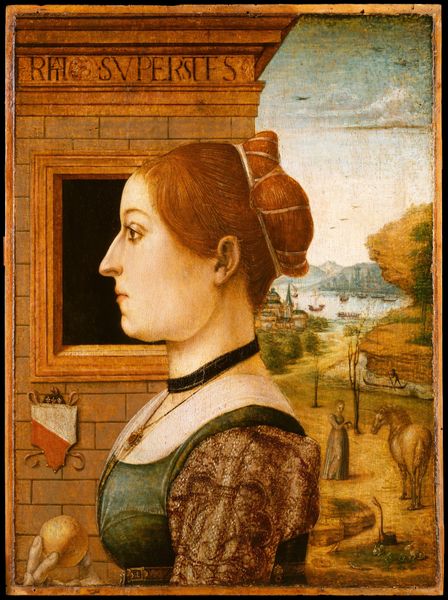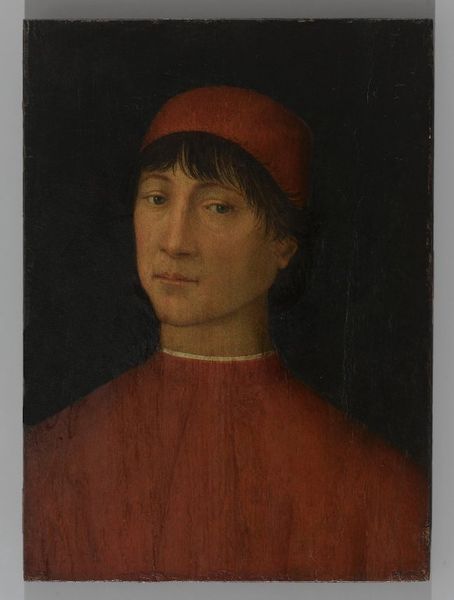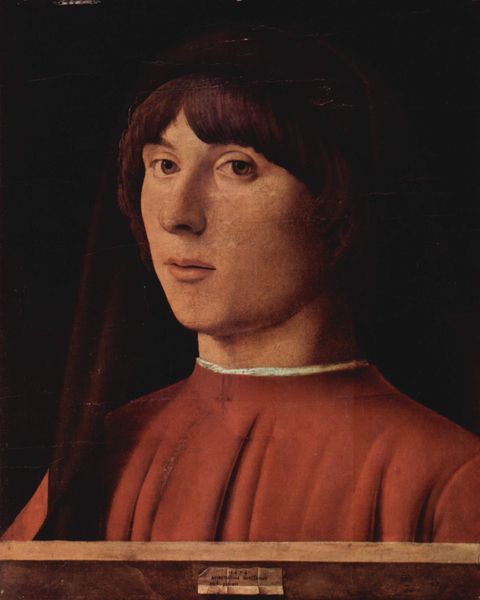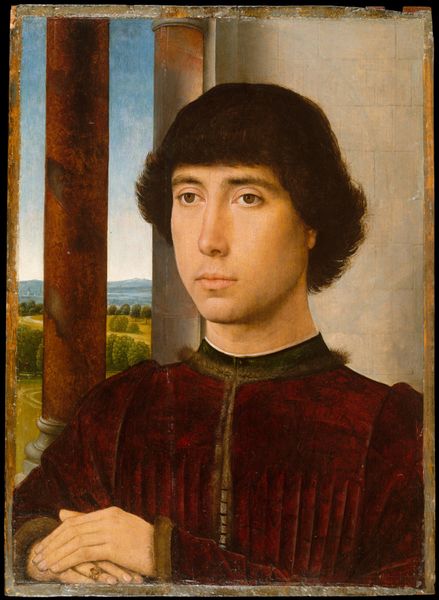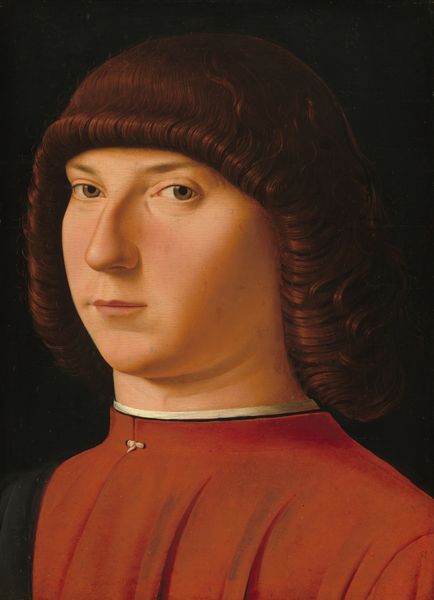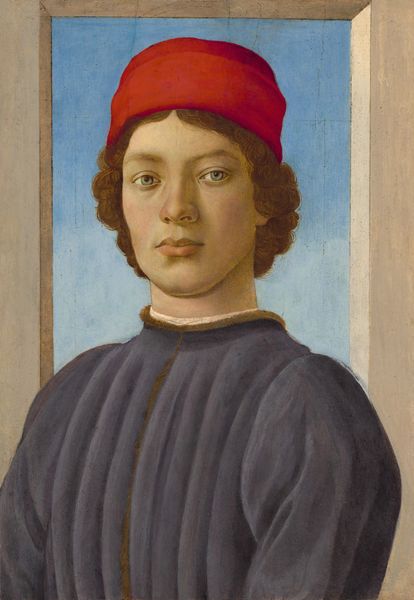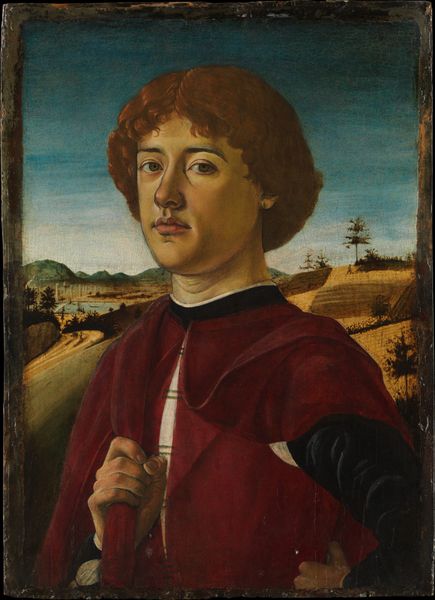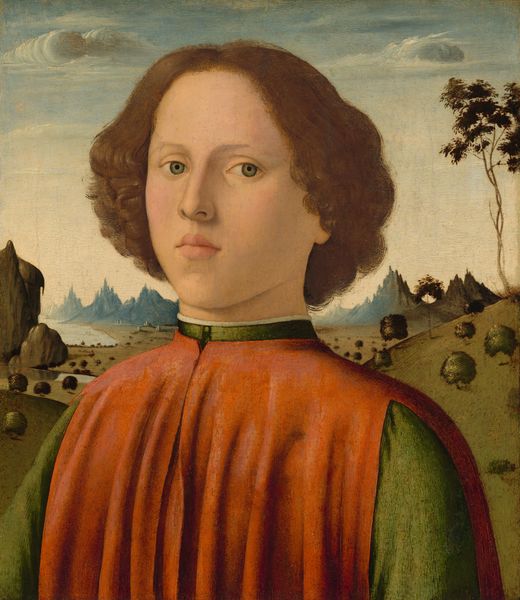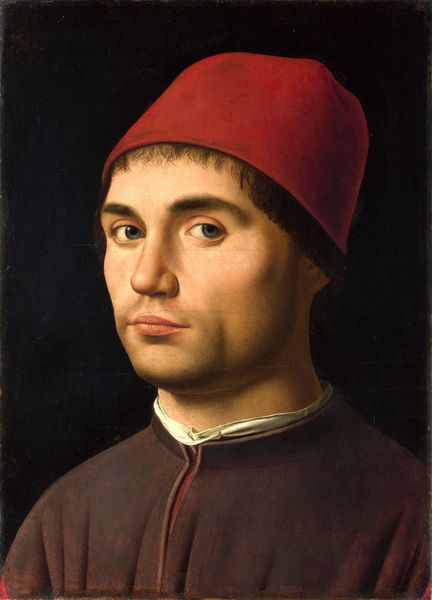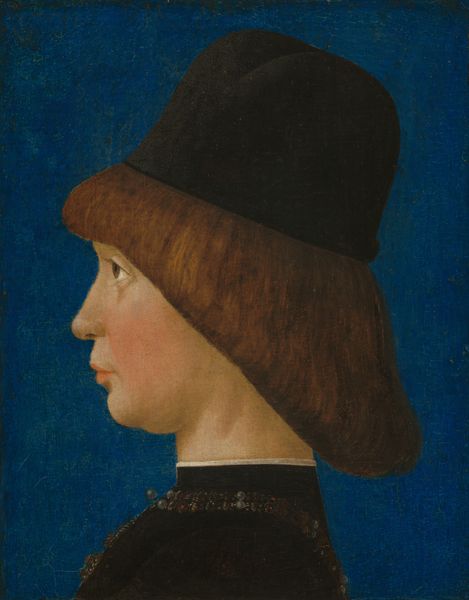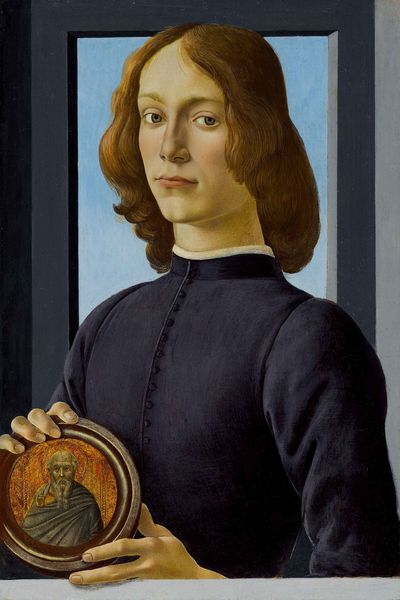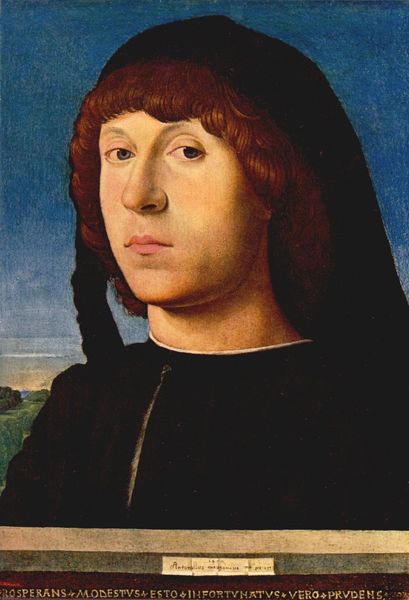
Portrait of a Man, possibly Matteo di Sebastiano di Bernardino Gozzadini 1494
0:00
0:00
oil-paint
#
portrait
#
oil-paint
#
landscape
#
figuration
#
11_renaissance
#
oil painting
#
men
#
history-painting
#
italian-renaissance
#
portrait art
#
profile
Dimensions: Overall 20 3/4 x 14 5/8 in. (52.7 x 37.1 cm); painted surface 19 3/8 x 14 in. (49.2 x 35.6 cm)
Copyright: Public Domain
Curator: This portrait, rendered in oil paint, is believed to be of Matteo di Sebastiano di Bernardino Gozzadini. Painted around 1494 by the artist known as Maestro delle Storie del Pane, it resides here at the Metropolitan Museum of Art. Editor: It's immediately striking – almost austere in its presentation, wouldn’t you say? The stark profile against that intriguing landscape and architectural element...there's a potent stillness. Curator: Precisely. Profile portraits during the Renaissance served a distinct social function, didn’t they? Emphasizing lineage and status, acting as almost a public declaration of identity. The inclusion of his possible coat of arms certainly supports this reading. But more than that, portraiture played a crucial role in solidifying humanist ideals around individual agency. Editor: He’s a symbol then, not simply a man. The positioning against both a natural vista and constructed façade gives us hints of his place in the social hierarchy, his proximity to the land itself. I’m curious about his relationship to that very detailed landscape—what might the journey depicted mean, given his social location and masculine identity at the time? Curator: His gaze is fixed beyond our perspective. The power dynamics are inescapable; we're positioned to observe him. Note the meticulously rendered clothing. The artist captures light to highlight rich textiles and vibrant colours—a deliberate display of wealth. Editor: I also see the smaller details: a single plant stem he holds, its blossoms delicate and seemingly ephemeral; the faint inscription above. These are rife with potential interpretations, given both his status and gender, and I wonder how we might contextualize this against contemporary explorations of identity. Are they a subtle nod to other facets of himself—an intellectualism or inner life perhaps not traditionally displayed for men in portraiture? Curator: We see a conscious choice to integrate the symbolic with the literal. These images become documents shaping narratives and maintaining structures of power and prestige across generations. The piece continues to resonate today, as we explore how those narratives surrounding class, gender, and agency shift or are maintained across centuries of art history. Editor: Absolutely. In its formality, it invites us to question the curated performance of identity – both then and now. The very act of portraiture is deeply implicated within systems of representation. Thank you for this discussion. Curator: A fascinating point. It’s been enlightening.
Comments
No comments
Be the first to comment and join the conversation on the ultimate creative platform.
